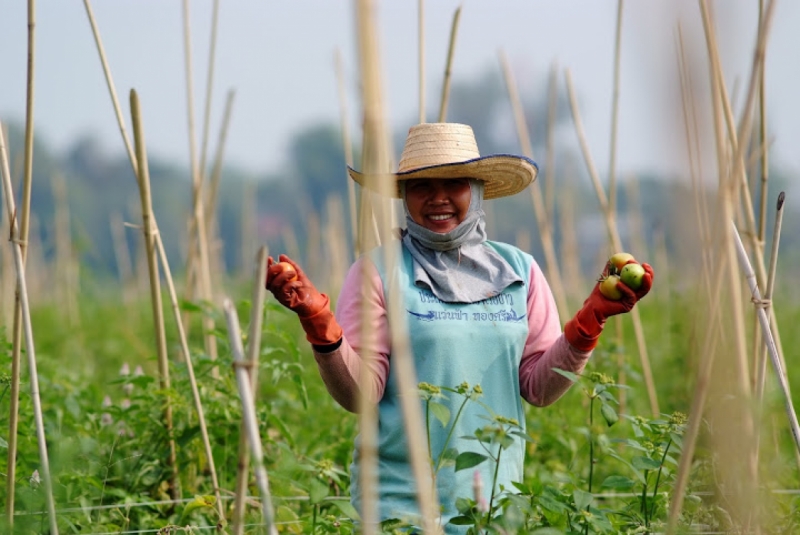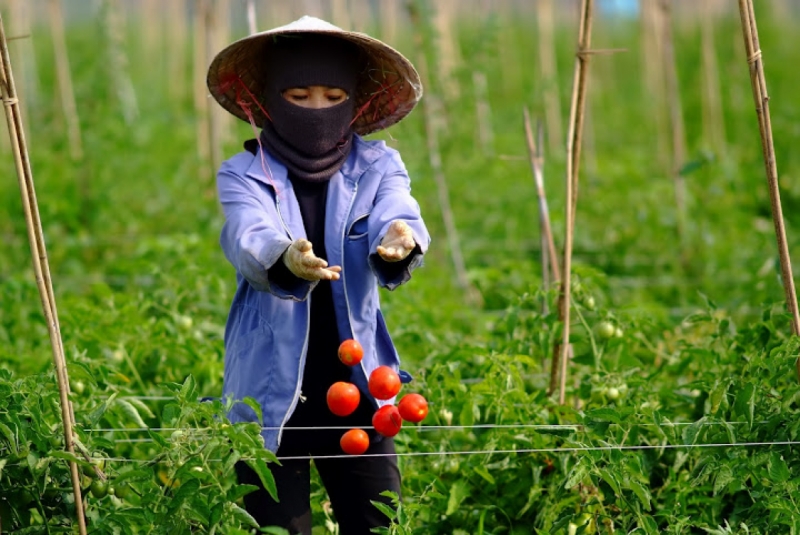




More often than not, consumers don’t ask where and how their food is produced. They go to supermarkets, where varieties of crops are all conveniently lined up for them, and just choose the ones that appear fresh. The good ones end up on their table for consumption.
It is always the producers’ responsibility, then, to ensure that the food they sell is safe and of good quality. If the food is certified clean and fresh, the benefit goes both ways – it promises good health for the consumers, and translates to higher demand and better income for the producers.
However, big companies manufacturing huge quantities of fruits and vegetables do not worry about that – they have all the technology and the access to large markets that guarantee food safety and high profit. Hence, the challenge is always for the small-scale farmers, who have to think of economical ways to ensure good quality-crops and earn a decent livelihood.
This begs for the practice of proper and effective postharvest management.
Postharvest Management in the LMR
Postharvest management is the proper handling of crops immediately following harvest, including cooling, cleaning, sorting and packing. It aims to reduce losses, improve marketing, and increase income, especially for small-scale rural farmers.
The need for postharvest management becomes even more glaring in the Lower Mekong Region (LMR). Despite being one of the world’s leading vegetable producers and consumers, its horticultural industry is seriously constrained by high postharvest losses and poor marketing systems.
The three main objectives of applying postharvest technology are:
1) to maintain quality (appearance, texture, flavor and nutritive value);
2) to protect food safety; and
3) to reduce losses between harvest and consumption.
Effective management during postharvest, rather than the use of sophisticated and often-expensive technology, proves to be the key in attaining these objectives.
While huge farming corporations may benefit from investing in high-tech machineries, often these options are not suitable for small-scale farmers and handlers. Simple, low-cost technologies – those which can be easily constructed and operated by the farmers and handlers themselves – are more practical for small volume operations.
Initiatives to promote proper postharvest practices could fuel economic growth, promote rural sustainability, and ease the problems of poverty, unemployment, and malnutrition in developing countries. Postharvest management enables developing countries to participate effectively in domestic and international trade, even in the light of increased competition.
Taking Baby Steps

Seeing postharvest management’s potential in boosting agriculture and economic growth in LMR, a number of initiatives promoting this technology have already been planned and conducted by various organizations.
For instance in Cambodia, the Australian Center for International Agricultural Research (ACIAR) had conducted a project titled "Improvement of Vegetable Production and Postharvest Management Systems." The initiative focused on developing capacity among postharvest, pathology and production researchers to address vegetable industry needs.
Then there was Postharvest Technology Assistance Program for Myanmar Agricultural Products Project, which helped establish a postharvest training center in Myanmar, as well as provided Training of Trainers (ToT) for Myanmar experts in Korea.
Currently, a regional project titled “Improving Rural Livehood through Vegetable-based Postharvest Technologies” is still on its way to promoting the vegetable postharvest sector in Cambodia, Lao PDR, and Vietnam. The project specifically aims to reduce postharvest losses of high volume, high value vegetable crops; and develop low-cost postharvest technologies in collaboration with both public and private sectors.
The Mekong Institute (MI), in collaboration with various funding organizations, is also stepping up its game with regards to postharvest management development. Next week, an NZAP-funded regional training program on “Postharvest Management of Fresh Horticultural Produce” will be conducted by MI from October 13 to 16, 2015.
The program aims to strengthen Good Agricultural Practices (GAP) and Postharvest practitioners network. These targeted networks will then continue to build GAP information and technology, which they would later share to small-scale producers and other relevant stakeholders.
These are just some of the tiny steps being taken to further develop postharvest management, and there are hopes of more to come.
What Lies Ahead
While the path towards proper postharvest management seems bright, there are clearly still a lot of hurdles to overcome.
Poor quality produce due to inappropriate infrastructure for postharvest handling, processing and marketing is one of the major challenges of postharvest management. These limitations also continue to pose constraints to domestic and international distribution of crops.
Alongside this is the inadequate level of skills in postharvest handling of small-scale farmers. Because small farmers lack training on marketing and handling their crops, lots of waste occur. Spoilage of fresh produce is also accelerated by the hot and humid climate in the region.
Still, concerned sectors are not ready to give up just yet.
Some of the suggestions to further promote and develop postharvest management are as follows:
· increased investment in research, development, training and extension programs across the region in order to build capacity in postharvest handling and marketing;
· a policy that is supportive of development of the fruit and vegetable sector;
· proper regulatory frameworks which will govern postharvest management and the quality of fresh produce;
· tapping institutions with adequate capacity to facilitate the implementation of these frameworks; and
· increased access of small farmers and handlers to credit and market information
Public awareness campaigns must likewise be implemented in order to increase awareness of the costs and implication of postharvest losses. Public awareness campaigns should involve scientists, as well as extension and social worker organizations, and may incorporate the use of audio-visual and social media, among others.
If these initiatives are acted upon vigorously, not only could LMR ensure safe and healthy food for its region, but it also promises better livelihood for farmers and horticulturists for many years to come.